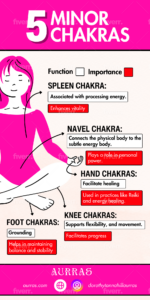The universe sings. Every atom, every molecule, every living cell resonates with its unique frequency. This intricate symphony of vibrations is not just a poetic observation; it’s a scientific fact. And harnessing the therapeutic power of sound – a field known as sound therapy – can profoundly affect our well-being, mind, body, and spirit.
If you’re curious about sound healing and wonder how this ancient yet increasingly popular modality can benefit you, this article is for you.
What is Sound Therapy?
Sound therapy, often referred to as vibrational healing or sound healing, is a practice that uses the power of sound to restore one’s mind, body, and spirit back to a state of balance. The harmonious vibrations that are produced by instruments like Tibetan singing bowls, tuning forks, gongs, and even the human voice, can induce a deep state of relaxation, which often leads to healing.
The Science Behind Sound Healing
At its core, everything in our universe is made up of energy vibrating at different frequencies. Our body, too, is a vibratory entity, with each cell, organ, and bodily system having its own frequency. When illness or emotional trauma strikes, it can cause a particular part of our body to vibrate out of tune or harmony. Sound therapy seeks to restore the correct vibrational
frequencies of the malfunctioning parts of the body, promoting healing and well-being.
Scientific studies have shown that sound therapy can:
- Boost the Immune System: Certain sound frequencies can stimulate the production of nitric oxide, a molecule which supports the immune system and encourages cellular repair.
- Promote Deep Relaxation: Sound waves can affect the brain’s neural pathways, leading one to a deeply relaxed state similar to that achieved during meditation.
- Reduce Stress: Sound therapy can decrease cortisol levels, our primary stress hormone.
- Enhance Mental Clarity: The calming effects of sound therapy often lead to heightened clarity and focus.
How Does Sound Therapy Work?
A typical session may have the therapist using various instruments around or on the patient. For example, bowls are placed around the body during a Tibetan singing bowl therapy session and tapped gently. The resulting vibrations and sounds harmonize with the body’s frequencies.
Our body has energy centers known as chakras. Sound therapists often target these centers, using specific frequencies to clear blockages, thus allowing energy to flow freely. When our energy flows freely, we experience better health and well-being.
Benefits of Sound Therapy
Beyond its physiological benefits, sound therapy offers an array of emotional and mental advantages:
- Emotional Release: Sound can tap into deeply buried emotions, allowing for release and healing.
- Improved Sleep: By promoting deep relaxation, sound therapy often aids in better sleep.
- Enhanced Concentration: The calmness induced by sound therapy is conducive to improved focus and concentration.
Who Can Benefit From Sound Therapy?
While sound therapy is beneficial for everyone, it’s especially effective for those:
- Dealing with stress or anxiety.
- Battling chronic pain.
- Undergoing emotional traumas or grief.
- Seeking clarity and purpose.
- Looking to enhance their spiritual growth.
Sound therapy isn’t merely another alternative healing method; it’s an immersion into the profound interconnectedness between the universe and us.
By tuning our vibrations to the therapeutic frequencies of sound, transformative healing, emotional clarity, and a more profound understanding of the self are within our grasp.
As you explore ways to bridge the gap between your physical and spiritual dimensions and seek remedies for both visible and hidden ailments, consider the harmonious realm of sound therapy. Remember, every note, resonance, and vibration joins in a universal melody with inherent healing power. Dive in and let the music guide you.






